The last 48 have been significant in terms of data collecting. All the science teams, along with the ship's crew and staff continue to work around the clock. During this flurry of activity the seismologists have gathered and analyzed images from the sea floor.
Collecting and analyzing data.
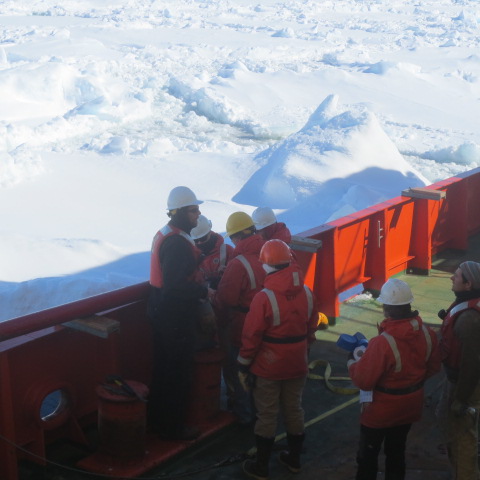 Scientists and techs on deck preparing a jumbo piston core
Scientists and techs on deck preparing a jumbo piston core
The geologists are busy with plotting core sampling sites, and the oceanographers deploy their equipment continually looking for physical data such as water temperature. As the scientists and their assistants do their thing, the captain and his mates position the ship with incredible precision as they battle sea ice and winds. The technicians are frantically setting up and taking down all the back deck equipment, always trouble shooting as they work.
 Rob Potter steering the ship
Rob Potter steering the ship
Inside the ship the folks in the dry lab keep a keen eye on all the monitors and record every detail.
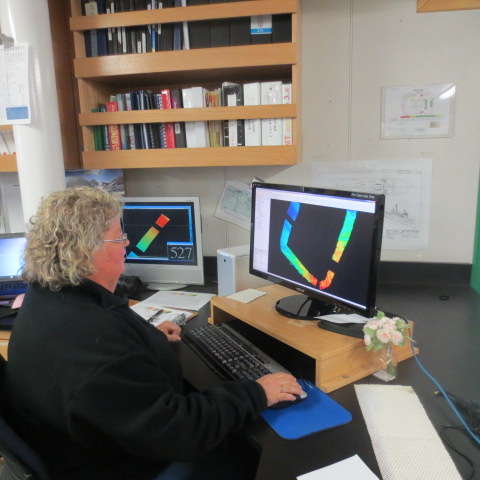 Kathleen Gavhan IT for ASC processing seismic data
Kathleen Gavhan IT for ASC processing seismic data
Highly experienced technicians will process every bit of data into files and charts that can then be reviewed.
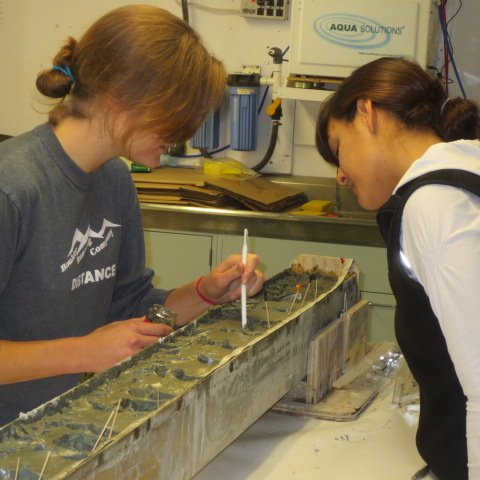 The tedious job of processing a core sample
The tedious job of processing a core sample
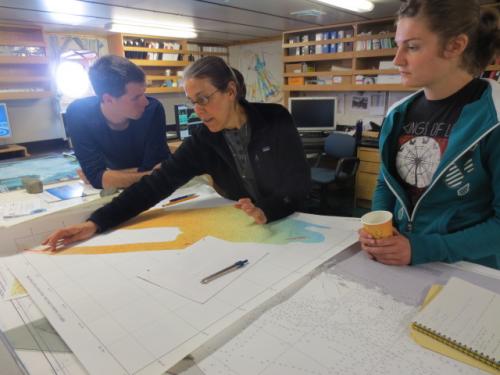 Chief Scientist Dr. Amy Leventer of Colgate University using her expertise to locate test sites)
Chief Scientist Dr. Amy Leventer of Colgate University using her expertise to locate test sites)
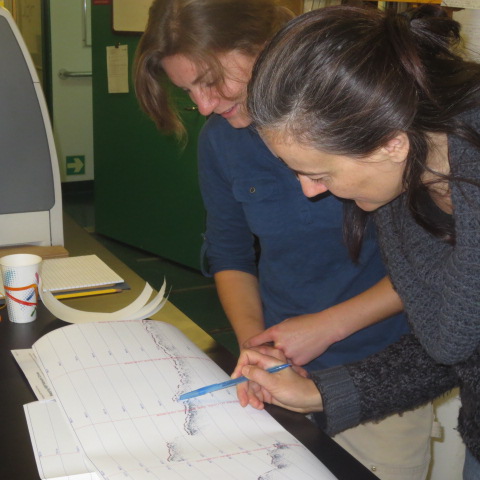 Leanne Armand of Macquarie University and Mikhaila Redovian of Colgate University looking at a CHIRP line for possible coring sites
Leanne Armand of Macquarie University and Mikhaila Redovian of Colgate University looking at a CHIRP line for possible coring sites
I have never experienced such an amazing collaboration of individual skills and knowledge. Every step in this processed is as valuable as the next. Teamwork and communication are invaluable. It is hard work in varying conditions. I am so fortunate to be a part of science making history. There is so much to report.

